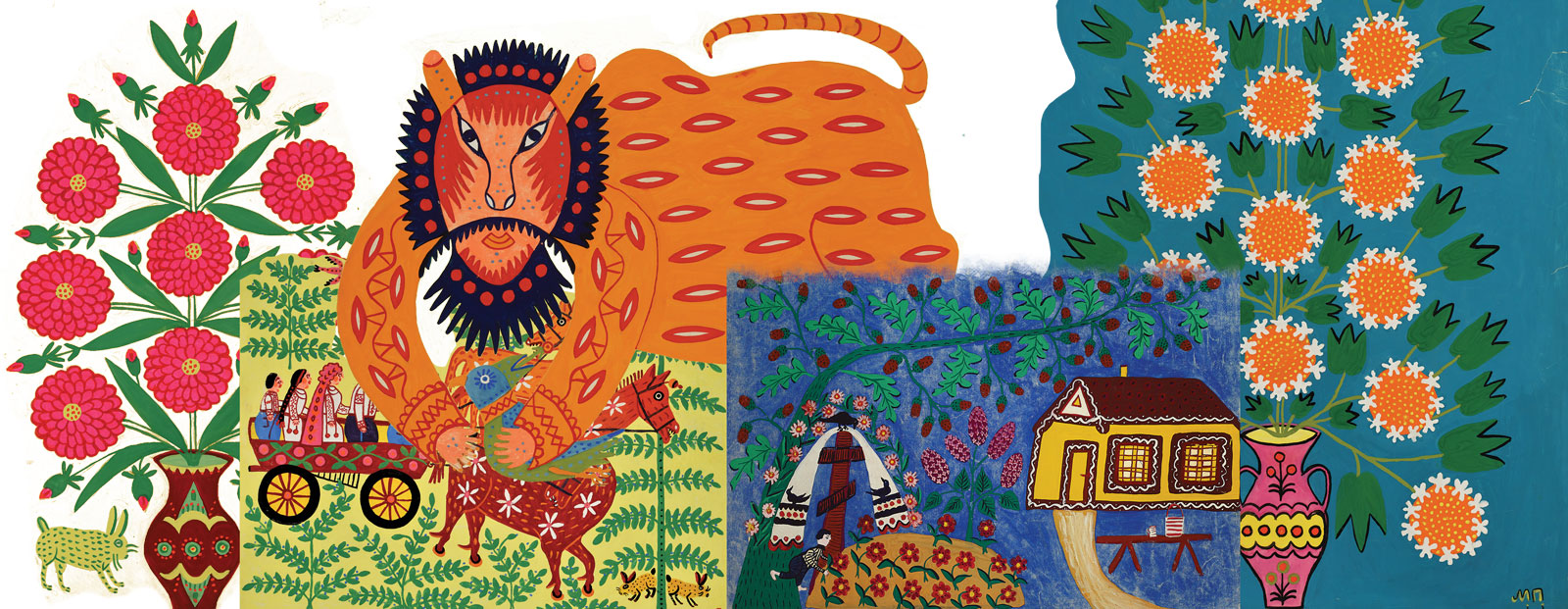The Artistic Legacy of Maria Prymachenko
Maria Prymachenko (1909-1997) was a self-taught artist famous in her lifetime for her vivid use of colour, fanciful depictions of plants and animals such as lions, birds, farm animals, and imagined beasts, and her playful use of pattern. Upon seeing the works of Maria Prymachenko at the 1937 Paris World’s Fair, Pablo Picasso declared “I bow down before the artistic miracle of this brilliant Ukrainian.” Indeed, she has come to embody the quintessential outsider artist.
Born in Bolotnia, Ukraine, to a family with few financial resources, Prymachenko had limited opportunities to train in academic artistic centres. She faced the added struggle of contracting polio in childhood, a condition which confined her to her bed for long periods of time. Despite her lack of formal education, Prymachenko studied local artistic traditions carefully, especially Ukrainian embroidery techniques and decorative egg/pysanka writing. The dazzling colours and stylized forms she absorbed from these traditional Ukrainian folk arts would come to inform her work.
Throughout her life Prymachenko was interested in themes related to Ukrainian culture and identity. For example, Taras Hryhorovych Shevchenko Arrives from His Exile to Flowering Ukraine (1968), celebrates Shevchenko’s return to his beloved Ukraine, while in Our Army Our Protectors (1978), Prymachenko imagines Ukraine’s armed forces as ordinary men and women, dressed in traditional Ukrainian attire, surrounded by blooms.
In the 1940s Prymachenko abandoned art creation for almost 20 years after witnessing the horrors of WWII and losing both her husband and brother under tragic circumstances. When she resumed creating art, first embroidery and then gouache and water colours, Prymachenko relied heavily on images that came to her in her dreams. She also created many works which incorporated anti-war thematic elements such as in The Threat of War (1986) and May That Nuclear War be Cursed (1978). Today, one of her most famous anti-war images A Dove Has Spread Her Wings and Asks for Peace (1982) has once again gained symbolic significance.
Prymachenko was a prolific artist, creating thousands of fairy-tale scenes and inventive compositions in her lifetime. Throughout she relied on materials which were simple and consistent. Her preferred techniques included painting in gouache and watercolours on Whatman paper with readily available, factory-made brushes.
In 1966, Prymachenko was awarded the Taras Shevchenko National Prize of Ukraine, one of Ukraine’s highest honours. Despite her renown and popularity, Prymachenko never sold her paintings for money, preferring to give them away as gifts to her friends and neighbours. The geometric patterns, vivid colours, and graphic motifs that she learned through her study of folk art informed her naïve style and made her works celebrated and highly sought after.


